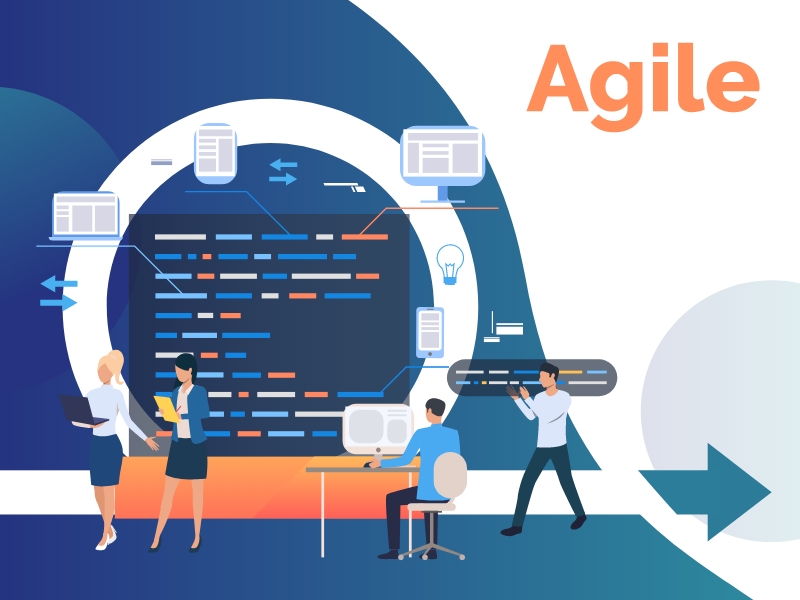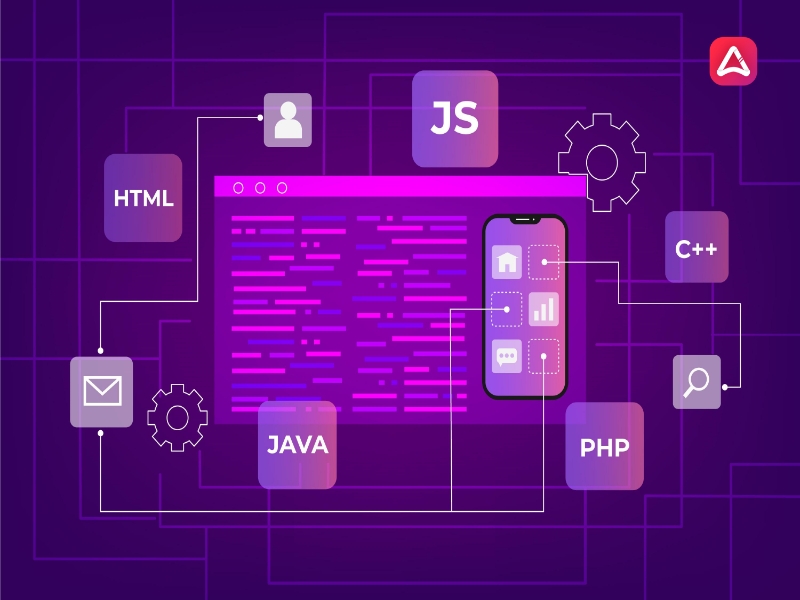What is Software Development?
Different types of methodologies for the software development life cycle (SDLC) are prevalent in custom software development projects, depending on their nature and requirements. Software development methodologies define how this methodology work is structured, planned, & organized.
What is an Agile Methodology in Software Development?
The two main approaches are traditional or cascade methodology and agile software development methodology. How they are different from each other and which one should you choose for your project. As a software development company, we know that the reduction of intermediate artifacts that do not add value to the final delivery represents more resources. We can dedicate these to the development of the product itself and its timely completion. Now you know what agile methodology in software development is.
Check also-
List of Software Development Companies in Canada
List of Top 10 software development companies in Toronto
Recommendations of an Agile Software Methodology
- We should consider these recommendations before executing any project under agile methods:
- The active participation of users is imperative.
- The development team must be empowered to make decisions.
- The requirements evolve, but the time scale and delivery dates are fixed (scope control).
- Capture requirements at a high level, light, and visual (prototypes).
- Develop small, incremental versions and iterate over them.
- Focus on frequent product delivery.
- Complete each functionality before moving on to the next.
- Apply the 80/20 rule, work on main functionalities – Pareto principle
- Testing is integrated throughout the project life cycle – test early & frequently.
- A collaborative and cooperative approach among all stakeholders is essential.
- Compendium of agile methodologies
Different methodologies related to sharp are currently known, as a response to the growing need of the industry to deliver quality products in the shortest time and cost possible. It is a fact that the stages of the agile software development life cycle can make or break any project.
Among them, we can mention:
- Extreme programming (XP)
- Scrum
- Lean
- Kanban
- Feature Driven Development (FDD)
- Agile Unified Process (AUP)
- Agile Modeling
- Crystal Clear Methods
- Dynamic Systems Development Methods (DSDM).
We are explaining the most relevant and popular ones:
Extreme Programming (XP)
A methodology that focuses on the development, rather than aspects of project management. XP was designed so that organizations were free to adopt all or part of the method. XP help us simplify the stages of the agile software development life cycle.
XP projects begin with a release plan deliverables planning phase, followed by several iterations, each ending with user acceptance testing. When the product has enough features to satisfy users, the team completes the iteration and releases the software.
Users write – user stories – to describe the need that the software must meet. Such stories help the team estimate the time and resources required to build the deliverable and to define acceptance tests. The user or their representative is part of the XP team, so they can add details about the requirements, while the software is being built in its iterations.
To create a deployment plan, the team breaks development tasks down into iterations, each with its own policy. At the end of an iteration, users perform acceptance tests, mapping against user stories. As a mobile app development company, we know that if they find errors, correcting the bugs becomes an activity for the next iteration.
The Stages of the Agile Software Development Life Cycle
When choosing the most appropriate methodology for your software development project, some of the things you should consider are:
- The speed of completion
- The size of the system
- The level of collaboration possible between the members of the software development team
- And that best suits your needs.
In particular, if you need to quickly launch a core product that you can then build on and add more features to, then agile methodology may be more appropriate for your project.
It works best if you are starting, which means you have limited resources but need a basic software application to get your business up and running. Also, this approach is suitable for small and medium business software applications.
On the other hand, the traditional method is more suitable for projects in large companies where we know the specifications and requirements before the project begins. Although we can divide the project into smaller components. This carries the risk that the individual parts are not compatible with each other once we complete the final product.
Finally, the agile method of software development requires a high level of collaboration among stakeholders. Each stakeholder must be available for input or feedback. In this sense, if you work with multiple groups (software developers, vendors, customers, and others) that are not in a single physical location or that may have limited availability. The traditional approach may be the best option.
Scrum
It was proposed by Ken Schwaber and Jeff Sutherland in 1995. It is currently the most widely used and widespread agile methodology in the world. It arises from rapid prototyping initiatives, in an environment where requirements are incomplete at startup and changeable during development. Unlike XP, the Scrum methodology includes both management and development processes.
In Scrum, partial and regular deliveries of the final product are made, prioritized by the benefit they bring to the project applicant. Therefore, Scrum is specially designed for projects in complex environments, where results need to be obtained soon, where requirements are changing or poorly defined, where innovation, competitiveness, flexibility and productivity are essential.
Scrum is also used to resolve situations when you need to systematically identify and solve inefficiencies, or when you want to work using a specialized process in product development. It consists of: planning the iteration, executing and closing the repetition (demonstration and retrospective)
Lean Development
According to this methodology, perfection is pursued through the reduction of activities without added value.
The definition of Lean applied to software is challenging because there is no specific method or process associated with it. Lean is not comparable with the rest of the methodologies explained in this article. A software development life cycle process or a project management process could be called Lean, only if it is verified that it complies with the values and principles established for this concept. To implement it, you must create or adjust your own software development process, understanding the principles and adopting the fundamental values of Lean.
Organizational culture and agile methods
In the current context, organizations require changes and rapidly evolve with their information systems and technological needs. The main problem for software development within a company is the abundance of requirements and the need to prioritize its attention. Under this scenario, the adoption of agile methodologies becomes relevant, which is why it is crucial to analyze the relationship and impact between these and the organizational culture.
Several works suggest that there could be difficulties separating organizational culture from the use of the agile software method and that there could be an interaction between the cultural context and the agile paradigm. The agile methodology also suits Web development companies and provides them with fast processes. Some authors emphasize the cultural flexibility of agile methods taking into account previous results or experiences in very diverse organizations. The model consists of two axes:
- Degree of susceptibility to change
- Internal / external focus
If you need a custom software developer, contact our experts. We are always ready to help businesses with cost-effective roadmaps and effective approaches.






